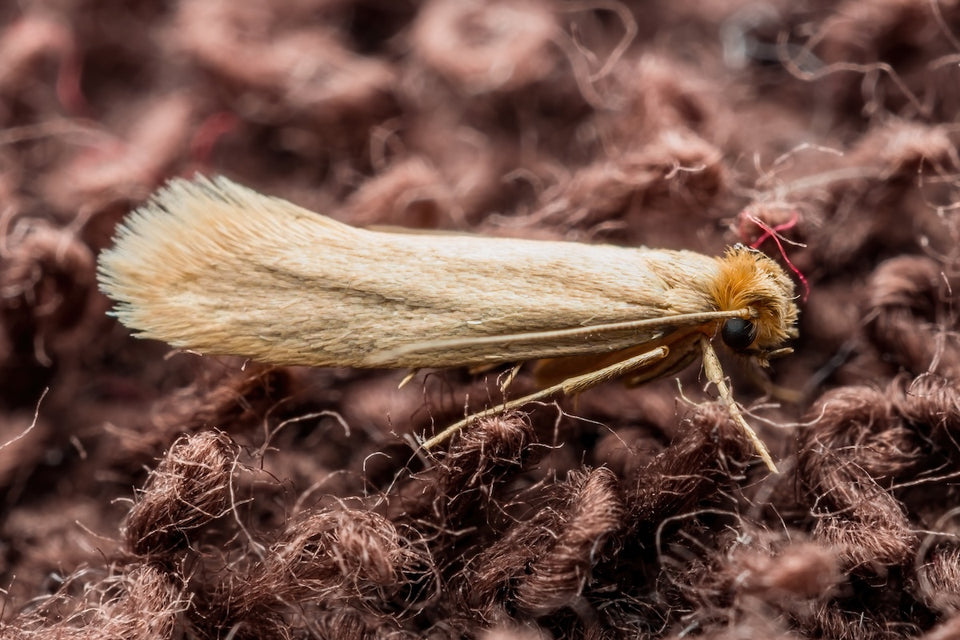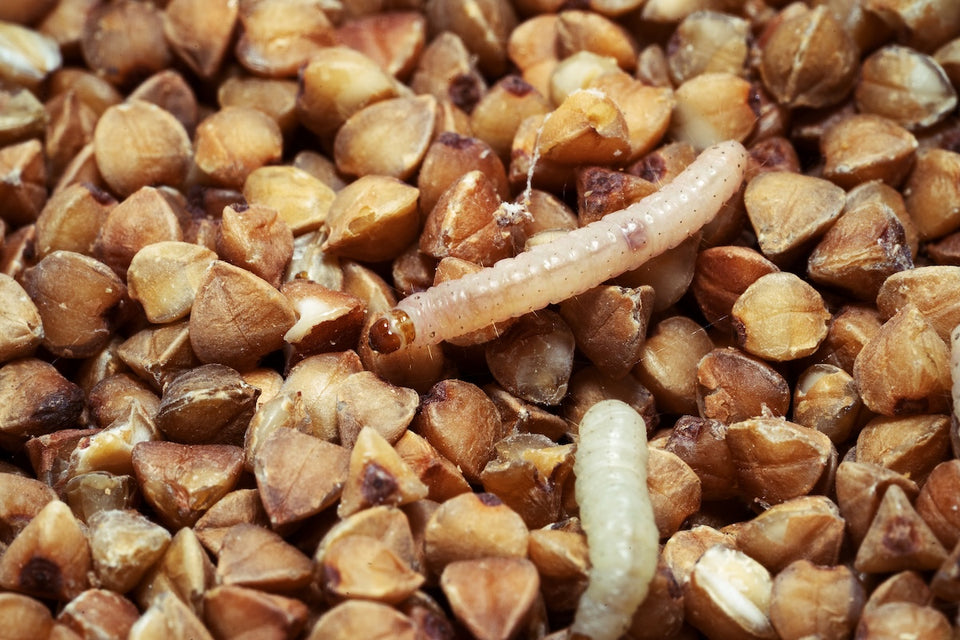Where Do Moths Come From and How to Stop Them at the Source

A moth infestation can begin quietly and escalate quickly, especially if you don’t understand how these pests operate. This guide explains the real reasons moths end up in your home, the surprising ways they get in, and what you can do to stop them, for good.
Not All Moths Are the Same
When people think of moths, they often imagine a single type. In reality, the insects damaging your closet or pantry fall into two very different categories: Clothes Moths and Pantry Moths. Each has distinct habits and hiding places, and the way you deal with them must reflect that. While one targets your clothing, the other quietly invades your dry food supply. What they share is a lifecycle that starts small, a few unnoticed eggs, and ends in damage that’s costly and frustrating.
Clothes Moths, particularly the Webbing Clothes Moth (Tineola bisselliella), are especially drawn to protein-rich natural fibers such as wool, cashmere, silk, and feathers. Pantry Moths, such as the Indian Meal Moth (Plodia interpunctella), lay their eggs in dry food products like flour, rice, cereals, and even pet food. In both cases, it’s the larvae that do the damage.

How Moths Find Their Way In
It’s easy to assume moths fly through open windows, but that’s rarely the case. Most infestations begin when we unknowingly bring moths, or more specifically, their eggs or larvae, into the home. That could be inside second hand furniture, thrifted knitwear, or even a sealed box from the attic. Pantry Moths often hitch a ride in dry goods, already present in packaging long before it’s opened.
Travel, storage, or deliveries can all serve as unnoticed entry points. A wool sweater worn once and returned to a wardrobe unwashed can host a few eggs. A shipment of grains stored in a warm cupboard can become a breeding ground before the first bowl is served.
Once they’ve found a home, they seek out still, dark corners. A pile of folded clothes. A rarely touched box of cereal. A linen drawer in a quiet guest room. These aren’t just hiding spots, they’re breeding grounds.
Why Clean Homes Still Get Moths
Moths don’t care about appearances. You can have pristine floors and neatly folded shirts and still have a problem. What attracts them is exposed dry food goods, animal-based fibers in clothing and textiles, and unwashed fabrics with traces of sweat, blood and food on them.

They are especially drawn to garments that have been worn but not washed before storage. The combination of natural fibers and residual body oils creates the perfect environment for larvae to thrive.
The hungry larvae, not the adult moths, do the damage. And because they feed silently, you may not know they’re there until you notice holes, webbing, or odd smells. By then, they’ve been working away for weeks or even months.
The Subtle Signs You Shouldn’t Ignore
A moth flitting across a room may not seem urgent, but if you spot one near a wardrobe or kitchen shelf, take it seriously. Often, the first real clues are physical:
Tiny holes in natural fabrics, sticky residue near food containers, or strange webbing in storage boxes. Cocoons or shed casings may also be present in dark corners or along skirting boards. These are more than inconveniences, they’re warning signs of an active lifecycle underway. Moths don’t create chaos overnight, but given time and quiet, they’re remarkably efficient.
Interrupting the Cycle

Dealing with a moth infestation is about timing as much as technique. Once eggs are laid, the lifecycle is underway. That’s why your strategy needs to focus on both removing current larvae and preventing future ones.
Start by identifying the affected zone. In wardrobes, this may mean cleaning every garment, even those that appear untouched. Clothes can be placed in the deep freeze for 72 hours or put through a hot wash cycle, more delicate items should be dry cleaned but check care labels first. In kitchens and store cupboards, check behind every tin and beneath every shelf. Discard contaminated food and any open exposed food stuffs (even chocolate!) and then vacuum and wipe down shelves, making sure you have thoroughly cleaned the whole area.
The Role of Moth Traps
Moth traps are designed to attract and catch the active adult male moths, preventing them from mating and interrupting the breeding cycle. Placed discreetly in closets, behind furniture, or inside cupboards they will also give you the ability to monitor for moths and gauge the size of the problem. Think of them as your early warning system.

They help detect infestations early, so you can act before the larvae cause real damage. They’re also a great long term solution for high risk zones like closets containing wool, or pantries used for bulk storage.
Long Term Protection That Doesn’t Involve Panic
Protecting your home from moths isn’t about overhauling your life. It’s about smart routines. Clean garments before storing them. Don’t leave dry goods open for weeks. Rotate items in deep storage occasionally. And keep traps in place, even when there’s no obvious sign of activity.
Make moth monitoring part of your seasonal wardrobe rotation or pantry reset. Just as you check expiry dates or air out linens, glancing at a trap can be the difference between early prevention and expensive replacement.
Ready to Protect Your Home?
At MothPrevention, we specialise in helping our customers protect their homes. Our traps are trusted by hundreds of thousands of households for good reason. They’re simple, effective, and chemical free. Whether you’re responding to a moth problem or trying to stay one step ahead, we’re here to help you.
About MothPrevention
MothPrevention® speak to customers every day about their clothes moth issues - clothes moths are a species that are ever increasing and that can cause significant damage to clothes, carpets and other home textiles.
To date, we’ve helped over 250,000 customers deal with their moth problems. We have developed professional grade solutions including proprietary pheromones and trap design, not available from anybody else in the USA.





